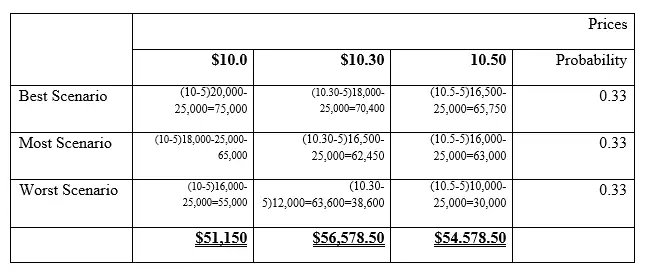Laplace Criterion of Rationality
Laplace criterion uses expected monetary value. What is this referred to as EXPECTED monetary value?
The answer is the “product of monetary value and the probability given”. That is as good as mean, average or normal outcome. For you know, average value of observations uses either the arithmetic mean or probability. Now what are the steps to achieve this?
Step one: Assigning of Probability on the available options
In this case, the decision maker allocates some probability based on experience or information provided
Step two: Determine the expected monetary value of each option
Step three: Select the option with the highest expected monetary value
Example
The sales manager is looking up to select the best price his company can use to sell its products.
So the decision to be made will be determined by the best of the worse pay-off identified. Such that if given the following pay-off matrix;

Costs were as follows;
Variable cost $5
Salaries $25,000
The probability for the three conditions are 0.33 each
Required, using the Laplace Criterion rule, show the correct alternative.
Solution

Remember that our decision is on price to use in the market. Therefore,
For 10.00= 24,750+8,250+18,150=$51,150
For 10.30=23,232+20,608.50+12,738=$56,578.50
For 10.50=23697.50+20,790+9,900=$54.578.50
Decision-select price $10.30